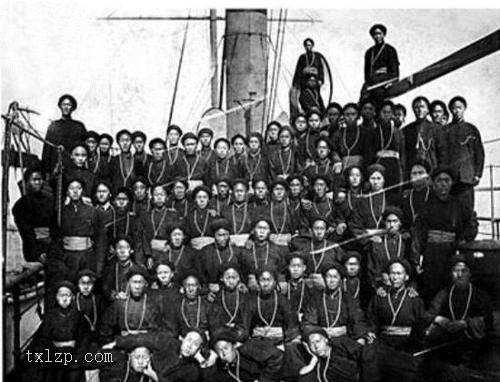Share a group of old photos of Lintan, Gansu, in the 1940s. Let’s take a look at the working people on the Taohe River and the urban and rural landscape of Lintan 80 years ago
<pdata pm slice="11 []". For thousands of years, Lintan has been the gateway to the convergence of Han and Tibetan in Longyou, the transition of farming and animal husbandry, the east to west, and the south to north. It is known by historians as the frontier fortress of Beishuihe Huang, the west to control Panrong, and the east to Longyou. It is the key section of the Tang Fan ancient road, known in history as“ Portal to Tibet”, It started in the Song Dynasty, flourished in the Ming Dynasty and ended in the Qing Dynasty; Tea horse exchange&rdquo
分享一组1940年代甘肃临潭老照片,让我们一览80年前洮河边上劳动人民及临潭地区城乡风貌。
临潭县隶属甘南藏族自治州,古称洮州,位于甘肃省南部,甘南藏族自治州东部,地处青藏高原东北边缘,是农区与牧区、藏区与汉区的结合部。 临潭千百年来一直是陇右汉藏聚合、农牧过渡,东进西出、南联北往的门户,被史家称为北蔽河湟,西控番戎,东济陇右的边塞要地,是唐番古道的要冲地段,史称“进藏门户”,是始于宋、兴于明、止于清的有名“茶马互市”。
![图片[1]-The old photos of Lintan, Gansu in the 1940s-China Archive](https://chinaarchive.net/photo/republic-of-china/1-200QH22511Z6.jpg)
1940年4月,临潭城关镇俯瞰。
![图片[2]-The old photos of Lintan, Gansu in the 1940s-China Archive](https://chinaarchive.net/photo/republic-of-china/1-200QH23217-50.jpg)
1940年7月,洮河边上的农田,当地人在收割小麦。
![图片[3]-The old photos of Lintan, Gansu in the 1940s-China Archive](https://chinaarchive.net/photo/republic-of-china/1-200QH23216.jpg)
1940年,临潭至岷县,洮河河谷地带的耕地。这里紧邻陇南汉地,气候温暖,汉、回、藏等民族定居生活在这里。
![图片[4]-The old photos of Lintan, Gansu in the 1940s-China Archive](https://chinaarchive.net/photo/republic-of-china/1-200QH23215-50.jpg)
1940年,洮河中的一座庙。这座庙在临潭秦关村边上的洮河中,卓尼东面40里。
![图片[5]-The old photos of Lintan, Gansu in the 1940s-China Archive](https://chinaarchive.net/photo/republic-of-china/1-200QH23215.jpg)
1940年,洮河中的一座庙。
![图片[6]-The old photos of Lintan, Gansu in the 1940s-China Archive](https://chinaarchive.net/photo/republic-of-china/1-200QH23217.jpg)
1940年,一棵被敬拜的神树,上面挂着许多祈求好运平安的木牌。
![图片[7]-The old photos of Lintan, Gansu in the 1940s-China Archive](https://chinaarchive.net/photo/republic-of-china/1-200QH23214.jpg)
1940年,神树前站着一位汉族女孩。
![图片[8]-The old photos of Lintan, Gansu in the 1940s-China Archive](https://chinaarchive.net/photo/republic-of-china/1-200QH23211.jpg)
1940年,藏族妇女在晒场上劳作。
![图片[9]-The old photos of Lintan, Gansu in the 1940s-China Archive](https://chinaarchive.net/photo/republic-of-china/1-200QH23212.jpg)
![图片[10]-The old photos of Lintan, Gansu in the 1940s-China Archive](https://chinaarchive.net/photo/republic-of-china/1-200QH23212-50.jpg)
![图片[11]-The old photos of Lintan, Gansu in the 1940s-China Archive](https://chinaarchive.net/photo/republic-of-china/1-200QH23213.jpg)
![图片[12]-The old photos of Lintan, Gansu in the 1940s-China Archive](https://chinaarchive.net/photo/republic-of-china/1-200QH23213-50.jpg)



![[Qing Dynasty] British female painter—Elizabeth Keith, using woodblock prints to record China from the late Qing Dynasty to the early Republic of China—1915-China Archive](https://chinaarchive.net/wp-content/uploads/2022/11/image-191x300.png)

